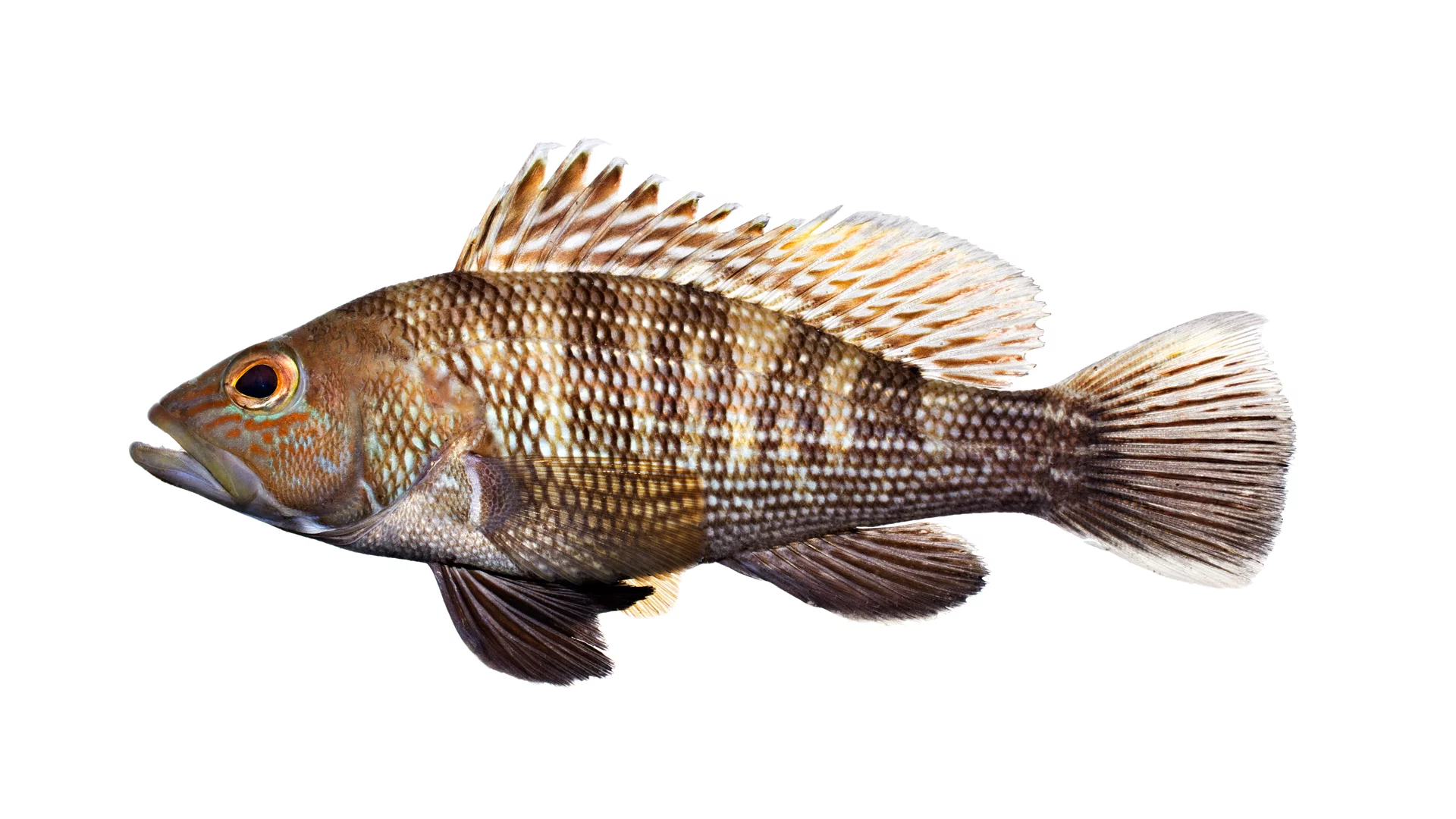The white seabass Fish, a prized catch for both sportfishing and commercial markets, graces the waters off the Pacific Coast from Baja California to Alaska. This silvery game fish, known for its fight and delicious flesh, presents a unique challenge to anglers throughout the year. Understanding the white seabass’ seasonal patterns is key to maximizing your chances of landing a trophy.
Spring: The Awakening of the Giants
As winter loosens its grip and spring paints the California coast with vibrant hues, a shift occurs in the underwater world. The water temperatures begin to rise, triggering a movement for the white seabass.
- Early Spring (February-March): Spearfishing enthusiasts often brave the chillier, murkier waters of early spring, specifically targeting the kelp beds. Here, large female white seabass, sometimes exceeding 40 pounds, gather for breeding purposes. This period offers a brief window for skilled spearos to encounter these magnificent creatures before they disperse northward as the water warms.
- Mid-Spring (April-May): For traditional anglers, mid-spring marks the true beginning of the white seabass season. Activity picks up around offshore islands like Catalina and San Clemente, with good prospects extending to other island chains. This is when sportfishing boats start seeing a consistent catch. Live bait like sardines, mackerel, and squid become highly effective as white seabass increase their feeding activity.
Factors to Consider in Spring:
- Water Temperature: The rise in water temperature is the primary trigger for white seabass movement. Warmer waters signal breeding and feeding opportunities, prompting them to emerge from deeper sheltering grounds.
- Moon Phase: While not a definitive science, many anglers swear by the influence of the full moon on white seabass activity. The three days before and after a full moon are often cited as prime bite times, though successful catches occur throughout the lunar cycle.
- Bait Availability: Spring coincides with increased baitfish presence in nearshore waters. Targeting areas with abundant sardines, mackerel, or anchovies is a wise strategy for attracting white seabass.
Summer: Consistent Action and Diverse Techniques
Summer paints a golden picture for white seabass fishing. Warmer waters spread across the coast, creating a more consistent and widespread fishery.
- Peak Season (June-July): These months represent the heart of the white seabass season. By now, the fish have dispersed throughout their range, offering anglers opportunities from shallow reefs to offshore structures. Live bait remains a top choice, but various artificial lures like jigs and swimbaits also become highly effective.
- Versatility Takes Center Stage: Warmer weather allows for exploring a wider range of fishing techniques. Bottom bouncing with live bait or jigs near rocky reefs and kelp beds proves productive. Trolling along likely migration routes with swimbaits or crankbaits can also yield results.
Summer Considerations:
- Kelp Beds: These underwater forests provide both food and shelter for white seabass throughout the summer. Targeting the edges of kelp beds with live bait or slow-drifting techniques can be highly successful.
- Offshore Adventures: For anglers seeking a true challenge, venturing further offshore can lead to encounters with larger white seabass. Deeper structures and artificial reefs become prime targets during this time.
- Surface Activity: Keep an eye out for birds working baitfish schools on the surface. This can indicate feeding activity and the potential presence of white seabass below.
Fall and Winter: A Time for Patience and Planning
As fall approaches, water temperatures begin to dip, and white seabass activity slows down. However, this doesn’t mean the season is entirely closed.
- Transitional Period (August-September): The late summer and early fall months represent a transitional period for white seabass. Their feeding activity may decrease, and targeting them becomes more challenging. However, skilled anglers can still find success by focusing on specific areas and techniques.
- Winter (October-February): Winter presents the most subdued period for white seabass fishing. Colder waters prompt them to retreat to deeper, offshore areas. While targeted fishing becomes less productive, this time serves as a valuable period for planning the upcoming season.
Fall and Winter Strategies:
- Live Bait Remains Key: Live bait like sardines or mackerel continues to be the most enticing option throughout the year, even during the slower fall and winter months.
- Focus on Structure: Target areas with significant underwater structures like reefs, wrecks, or rock piles. These provide white seabass with shelter and potential feeding opportunities throughout the colder months.
- Research and Preparation: Use the fall and winter to meticulously research potential fishing spots for the upcoming spring season. Analyze water temperature charts, study historical catch data, and consult with experienced anglers to refine your approach.pen_spark.







